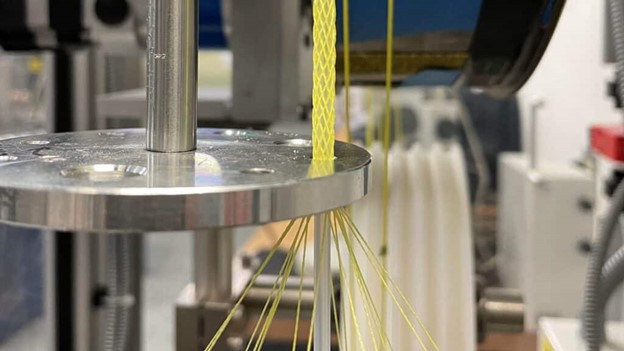
In two new studies, North Carolina State University (NC State) researchers designed and tested a series of textile fibers that can change shape and generate force like a muscle. In the first study, the researchers focused on the materials’ influence on the artificial muscle’s strength and contraction length. The findings could help researchers tailor the fibers for different applications.
In the second, a proof-of-concept study, the researchers tested their fibers as scaffolds for live cells. Their findings suggest the fibers, known as “fiber robots,” could potentially be used to develop 3D models of living, moving systems in the human body.
“We found that our fiber robot is a very suitable scaffold for the cells, and we can alter the frequency and contraction ratio to create a more suitable environment for cells,” says Muh Amdadul Hoque, graduate student in textile engineering, chemistry and science at NC State. “These were proof-of concept studies; ultimately, our goal is to see if we can study these fibers as a scaffold for stem cells or use them to develop artificial organs in future studies.”
Researchers made the shape-changing fibers by encapsulating a balloon-like tube, made of a material similar to rubber, in a braided textile sheath. Inflating the interior balloon with an air pump makes the braided sheath expand, causing it to also shorten. The researchers measured the force and contraction rates of fibers made from different materials in order to understand the relationship between material and performance.
They found that stronger, larger diameter yarns generated a stronger contraction force. In addition, they found that the material used to make the balloon impacted the magnitude of the contraction and generated force.
“We found that we could tailor the material properties to the required performance of the device,” said Xiaomeng Fang, assistant professor of textile engineering, chemistry and science at NC State. “We also found that we can make this device small enough so we can potentially use it in fabric formation and other textile applications, including in wearables and assistive devices.”
 TEXTILES.ORG
TEXTILES.ORG


